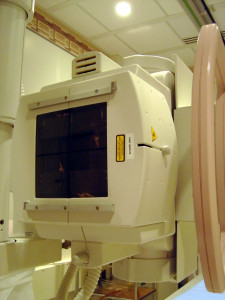
SICKLE CELL AND BONE MARROW TRANSPLANT
Stem cell transplants (A stem cell transplant, also called a bone marrow transplant, is a procedure that infuses healthy cells, called stem cells, into the body to replace damaged or diseased bone marrow. Bone marrow is the center of the bone where blood cells are made) from bone marrow or blood of healthy donors are increasingly being used to successfully cure SCD. Complications from hydroxyurea therapy and stem cell transplants are rare but can be serious or life-threatening. People with SCD and their families should ask their doctors about the benefits and risks of each.
Stem cell or bone marrow transplants
Stem cell or bone marrow transplants are the only cure for sickle cell disease, but they’re not done very often because of the significant risks involved.
Stem cells are special cells produced by bone marrow (a spongy tissue found in the centre of some bones) that can turn into different types of blood cells.
For a stem cell transplant, stem cells from a healthy donor are given through a drip into a vein. These cells then start to produce healthy red blood cells to replace the sickle cells.
A stem cell transplant is an intensive treatment that carries a number of risks. The main risk is graft versus host disease, which is a life-threatening problem where the transplanted cells start to attack the other cells in your body.
Stem cell transplants are generally only considered in children with sickle cell disease who have severe symptoms that haven’t responded to other treatments, when the long-term benefits of a transplant are thought to outweigh the possible risks.
http://www.nhs.uk/Conditions/Sickle-cell-anaemia
Bone marrow transplantations have been performed successfully in select children with sickle cell disease. Best results are obtained with matched sibling or related donors. The next best option is fully matched but unrelated donors. Unfortunately, this second option is only rarely available. However, due to a lack of available donors and the risks of potential complications, bone marrow transplantations for sickle cell disease are not routinely performed. Complications can include the immune system’s rejection of the transplant (a condition called graft-versus-host-disease) and serious infections. Patients can suffer serious neurological damage if the procedure triggers bleeding in the brain. In general, younger children are considered better candidates for bone marrow transplantation than older children.
Before a bone marrow transplant can be performed, the patient must undergo chemotherapy to completely destroy their own bone marrow. Bone marrow transplantation is considered too risky for adults with sickle cell disease, because they cannot tolerate the chemotherapy regimen as well as children and they tend to have long-term organ damage as a result of the condition.
Researchers are investigating new types of bone marrow transplants for children and adults with sickle cell disease. Several new approaches appear promising. They include giving less intense doses of chemotherapy prior to the transplant (a regimen known as “reduced-intensity conditioning“), or using low doses of immunosuppressive drugs or radiation in place of chemotherapy.
In recent years, researchers have reported some success with “half-matched” marrow transplants (haploidentical transplant is the medical term), which uses a donor who shares only 50% of the recipient’s genes. While this approach may potentially help expand donor options for patients, the research is still very preliminary. Bone marrow transplant with a fully matched donor remains the best choice at this time.
http://pennstatehershey.adam.com







